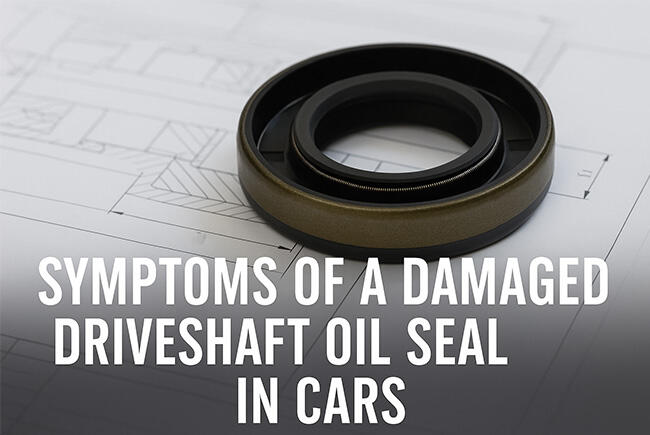In modern vehicles, the driveshaft plays a pivotal role in transmitting torque from the engine to the wheels. One of the less-visible but equally important components supporting its function is the driveshaft oil seal. When this seal fails, it can lead to multiple mechanical and operational concerns.
Understanding the Role of a Driveshaft Oil Seal
The primary function of the driveshaft oil seal is to contain gear or transmission fluid within the housing while preventing external contaminants—such as dust and water—from entering. It also ensures proper lubrication of the rotating shaft to reduce friction and wear.
Key Signs of a Failing Driveshaft Oil Seal
Let’s explore the common symptoms that indicate the oil seal may be damaged:
1. Visible Oil Leaks Near the Driveshaft
One of the earliest and most obvious symptoms is fluid leakage. You might notice oily patches beneath the car, especially around the rear differential or transmission area. Leaks not only affect lubrication but can also lead to overheating or gear damage over time.
2. Low Transmission or Differential Fluid Levels
If the seal is leaking, it will gradually reduce the fluid level in the system. This can result in noisy operation, grinding gears, or even damage to internal components if not addressed promptly.
3. Unusual Vibrations While Driving
A degraded or misaligned seal can allow excessive play or cause imbalances in the driveshaft, leading to noticeable vibrations—especially at higher speeds.
4. Contaminated Fluid
When the oil seal is compromised, dirt, moisture, and debris can infiltrate the gearbox or differential, contaminating the fluid. Discolored or milky transmission fluid is often a warning sign of this issue.
5. Burning Odor or Overheating
Reduced lubrication due to a leaking seal may cause components to heat up. You might smell a faint burning odor, especially after extended drives, indicating friction-related problems.

Frequently Asked Questions (FAQ)
Q: Can a damaged driveshaft oil seal cause drivability issues?
A: Yes. If ignored, it may lead to gear slipping, abnormal noises, or even breakdown of transmission components.
Q: Is it safe to drive with a leaking oil seal?
A: While it may not immediately immobilize the car, continuing to drive with a leak increases wear and the risk of major component failure.
Q: How often should these seals be inspected?
A: It's advisable to inspect seals during routine service intervals or when fluid levels drop unexpectedly.
Recognizing early signs of a damaged driveshaft oil seal is key to maintaining your vehicle’s performance and preventing costly repairs. Timely inspection and appropriate seal replacement are critical in ensuring smooth power transmission and system longevity.
 Hot News
Hot News